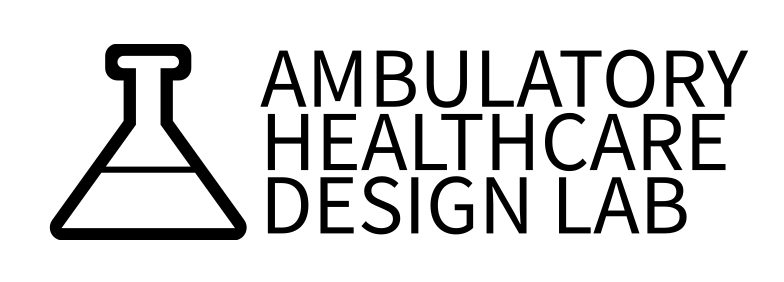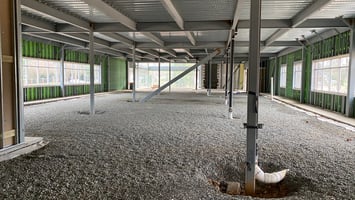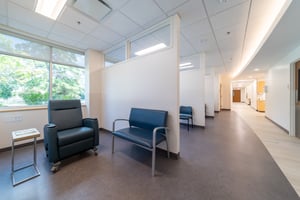Introducing natural light into the ambulatory healthcare setting can have profound effects on both...
8 Factors in the Design of a Total Joint Replacement ASC
Total joint replacement has been a catalyst of growth in the ASC market for several years. It is estimated that there are over 550 total joint ASC's in the United States and more are on the way. Here are eight factors to consider in the design of total joint ASC's.
1. Spacious Operating Rooms: Typical ASC operating rooms average about 400 sf. In total joint replacement, the operating rooms should be larger to accommodate bigger operating tables, a considerable amount of equipment, larger back tables, and more surgical staff. Aim to make the rooms greater than 500 sf up to 600 sf or more.
2. Planning for Back Tables: Depending on surgeon and facility preferences, the number of back tables may be greater than with other specialties. Back tables are essential for organizing the necessary surgical instruments to ensure that the surgical team has easy access to everything they need during a procedure. Adequate space outside the OR should be planned for parking, preparing, cleaning, and transporting the tables.
3. Sterile Processing: The number and size of sterilizing and disinfection equipment is often greater than in other types of ASC's. This is due to the greater number of large instruments that must be cleaned. Consulting with the sterilizer manufacturer during design can be helpful to determine sterilization volumes and obtaining recommendations for the appropriate quantity and sizes of the equipment necessary. Recognizing that surgical volumes may be lower at first and grow over time together with the large expense of the equipment, we often plan for a smaller number of sterilizers and/or washers initially with the ability to add units as the case volume grows.
4. Patient Holding Stations: A patient throughput analysis should be conducted to determine the optimum number of pre-op and recovery stations. Previous standards for multispecialty centers, where there were often a larger number of beds to handle the varied ratios of procedure to recovery times, usually don't apply in these facilities.
5. Levels of Privacy in Recovery: Including semi-private stations and private recovery rooms along with the typical curtained recovery bays provides options to address the different stages of recovery and responds to different patients' needs for recovering comfortably and with dignity.
6. Ample Storage: Storage space is often at a premium in ASC's. In total joint centers, extra storage space for large equipment and supplies is essential. Room for joint implants, surgical tools, and other necessary supplies as well as parking space in the semi-restricted corridor for stretchers, mobile C-arms, and other equipment are necessary and, when carefully planned and located, will contribute to more efficient procedures and better material management.
7. OR HVAC Controls: Careful consideration of temperature and relative humidity is crucial for the comfort of the surgical team and safety of the patients. Surgeons and staff wear protective garments during the procedures, and may wear lead aprons when there is extensive fluoroscopy. This together with the laborious work they are performing may contribute to discomfort in higher temperatures. For these reasons, most orthopedic surgeons prefer their OR's at lower temperature and relative humidity levels than the standards dictate, and this must be considered in the early stages of HVAC design.
8. Accessibility: While the Americans with Disabilities Act and local accessibility codes mandate that public places be designed to accommodate the disabled, patients coming to a total joint ASC may have additional needs due to mobility impairments. Covered drop-off/pick up areas, dedicated patient parking spaces near the entry (beyond those marked for the disabled), level walking surfaces, wider doorways, and automatic doors are features that will benefit the patients.
We welcome your comments, questions, and feedback through the submission form below. Or feel free to reach us at www.hsarchitecture.com or by hitting the "Contact Us" button at the top of the page.



